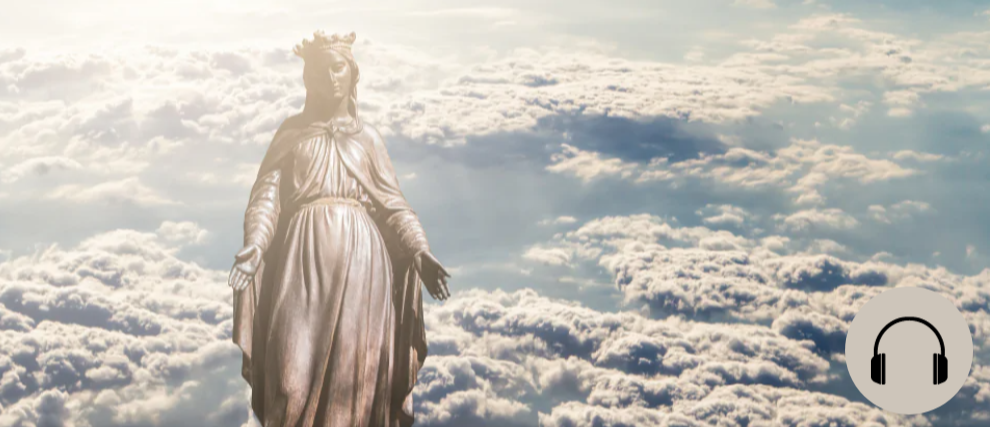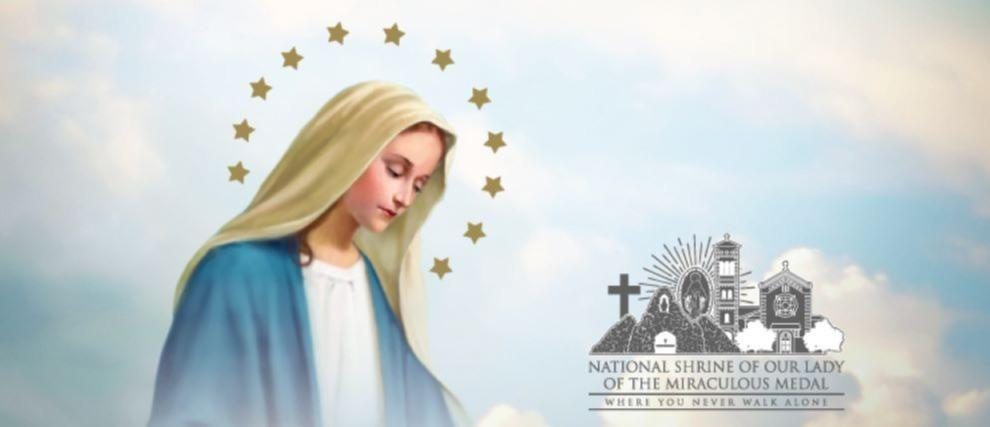Rue du Bac: Apparitions, Message and Miracles, Pilgrimage, Prayer
In the mid-19th century, amid political crisis in France and abroad, the Virgin Mary appeared three times to a 24-year-old novice. During these apparitions, the Virgin instructed the visionary, Catherine Labouré, to have a medal struck according to precise specifications. This medal proved extraordinarily miraculous and retains that name today. While not officially recognized by the Church, these events hold implicit recognition through the canonical process for the medal and Catherine’s canonization. Rue du Bac marks the first of five major Marian apparitions in 19th-century France: La Salette, Lourdes, Pontmain, and Pellevoisin.
History of the Apparitions
Catherine Labouré was born in 1806 in Côte d'Or. Shortly before turning 24, she joined the Daughters of Charity, entering the Rue du Bac convent as a novice in April 1830.
First Apparition
Months later, on the night of July 18, a "child of light" awakened her around 11:30 PM, urging her to go to the chapel where "the Holy Virgin awaits." She followed and was astonished to find all candles lit. The Virgin arrived soon after, seated herself in the sanctuary chair, and told Catherine that God had a difficult mission for her but she would receive help. The Virgin also foretold troubled times for France: the overthrow of King Charles X (months later), the murder of the Archbishop of Paris (1871), and the merger of two Daughters of Charity congregations (1850). She assured protection, pointing to the altar step where "graces will be poured on all who ask with trust and fervor."
Second Apparition
Around 5:30 PM on November 27, during chapel prayer, the Virgin appeared invisibly to others. She stood on a globe, crushing a serpent, holding a smaller globe topped with a cross. Around her shone the words:
"O Mary conceived without sin, pray for us who have recourse to you."
Rays streamed from her hands as she explained:
"This ball represents the whole world, especially France... and every person... The rays symbolize graces I pour on those who ask."
The vision reversed, revealing the medal’s back:
The letter M surmounted by a cross
Two hearts below: Jesus’ crowned with thorns, Mary’s pierced by a sword
The Virgin instructed Catherine to take these images to her confessor and have "a medal struck. Those who wear it confidently and pray devoutly will receive great graces."
Final Apparition
In December, the Virgin visited Catherine a last time, confirming her mission and saying she would "hear her in prayer" but appear no more.
Catherine’s confessor, Father Aladel, initially dismissed her claims as imagination. After Catherine took vows in January 1831 and left for Enghien Hospice, he consulted the Congregation Superior. They brought the matter to the Archbishop of Paris, who approved the medal. The first medals were struck in 1832.
Catherine spent her life humbly caring for the elderly and poor at Enghien, her role unknown until her death in 1876. The phrase "conceived without sin" influenced Pope Pius IX’s declaration of the Immaculate Conception dogma (1854).
Message and Miracles of Rue du Bac and the Miraculous Medal
Core Message
The Rue du Bac message centers on trust in Mary’s intercession.
Miracles and Impact
The first 2,000 medals sparked immediate devotion. During a cholera epidemic in Paris, healings and protections multiplied among wearers. The medal spread globally (USA, China, Russia, Poland) with Father Aladel’s explanatory leaflet.
Within a decade, 10 million medals circulated. By Catherine’s death (1876), over one billion existed.
Archbishop de Quelen of Paris became a fervent advocate after experiencing surprising healings. In 1833, a Lazarist priest credited the medal for a confrere’s miraculous healing. In China, he distributed medals and witnessed multiple healings. That year, Frédéric Ozanam wore the medal when founding the St. Vincent de Paul Conferences in Paris.
Between 1830–1855, applicants to the Rue du Bac novitiate increased tenfold.
Notable Devotees
St. Bernadette wore the medal before her first vision at Lourdes, stating she "saw the Holy Virgin as depicted on the Miraculous Medal."
St. Thérèse of Lisieux wore it in Carmel.
The Curé of Ars commissioned an artwork titled "Our Lady of the Miraculous Medal."
Alphonse Ratisbonne, a Jewish man, converted after wearing the medal and seeing the Virgin in a Rome church (1842). He joined the Jesuits.
Anglican pastor John Henry Newman converted to Catholicism while wearing the medal.
St. Maximilian Kolbe promoted the medal widely and founded the Marian journal "Knight of the Immaculata," which saw quick success.
Pilgrimages to Our Lady of Rue du Bac
In 1894, the Congregation of Rites authorized a liturgical feast for the apparition, celebrated on November 27.
Pope John Paul II visited the chapel in 1980.
Today, two million pilgrims visit annually.
Prayer to Our Lady of the Miraculous Medal
"O Our Lady of the Miraculous Medal, who appeared to St. Catherine Labouré as Mediatrix of all graces, hear me, I implore you!
I place in your maternal hands all my intentions, spiritual and temporal needs. I entrust to you the grace I dare ask, begging you to speak of it to your divine Son. If it aligns with His will and my soul’s good, may He grant it. After raising your supplicant hands to the Lord, lower them upon me, envelop me in your rays of grace. May my soul, by their light and warmth, detach from earthly things, purify itself, and follow you joyfully until you welcome me at heaven’s gate. Amen."
Pray to the Virgin Mary with Trust on Hozana...
Novena to
Novena to
Novena to

